Rosanne Bittner's Blog, page 8
January 17, 2019
First Excerpt from LOGAN'S LADY
LOGAN'S LADY is coming in about two months, and you are going to love this dramatic but often humorous story about an uneducated, rough and tumble American bounty hunter (Logan Best), who ends up coming to the rescue of prim and proper, highly educated “Lady” Elizabeth Bennett from London, England. These two are as opposite as two could be, but an unexpected attraction between them grows into something neither can resist, while at the same time they track down ruthless men who have absconded with Lady Elizabeth’s money and personal valuables.
Here's an excerpt:
Logan didn't take his eyes off any of them. "You look more like the type who'd rather make money by just taking it. You won't find much on me, so maybe you should just ride on."
The red-bearded man stiffened. "Mister, I don' t take kindly to insults. We only stopped by to see if you'd like to sell that horse of yours."
Logan grinned. "Why in hell would I sell my only horse when I'm out here in the middle of nowhere?"
The bearded man chuckled. "On account of the fact that you ARE alone in the middle of nowhere. You must realize if you don't sell us that horse, we can just shoot you and take it."
Logan nodded. "You can try, but you'll regret it." The younger man snickered. "Hell, mister, there's four of us!"
"I've taken on more in my line of work."
"And what would that be?" a third man spoke up. Logan guessed him to be in the same age range as the others, all probably twenty to thirty years old. He could actually smell them without even getting close.
"Bounty hunter," Logan answered. "Any of you wanted for anything?"

Pre-Order LOGAN'S LADY
Here's an excerpt:
Logan didn't take his eyes off any of them. "You look more like the type who'd rather make money by just taking it. You won't find much on me, so maybe you should just ride on."
The red-bearded man stiffened. "Mister, I don' t take kindly to insults. We only stopped by to see if you'd like to sell that horse of yours."
Logan grinned. "Why in hell would I sell my only horse when I'm out here in the middle of nowhere?"
The bearded man chuckled. "On account of the fact that you ARE alone in the middle of nowhere. You must realize if you don't sell us that horse, we can just shoot you and take it."
Logan nodded. "You can try, but you'll regret it." The younger man snickered. "Hell, mister, there's four of us!"
"I've taken on more in my line of work."
"And what would that be?" a third man spoke up. Logan guessed him to be in the same age range as the others, all probably twenty to thirty years old. He could actually smell them without even getting close.
"Bounty hunter," Logan answered. "Any of you wanted for anything?"

Pre-Order LOGAN'S LADY
Published on January 17, 2019 11:37
November 16, 2018
DEATH TO THE FAINTING VIRGIN!
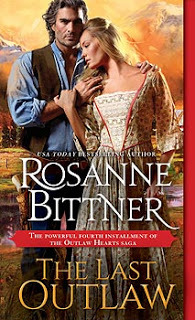 Back in the “old days” of 80’s romance, when the label “romance” sent female readers (and probably some male readers) swooning, the primary plot of our stories usually involved a young virgin who was ignorant of the power and influence of the tall, dark, handsome, experienced (and sometimes dangerous) hero. She fainted at the very thought of being at his mercy and her heart and body being overtaken by the alpha male who always knew how to handle a woman. The “innocent virgin” in these stories conjured up all kinds of scenarios, and led to steamy, usually forbidden sex throughout or near the end of the story.
Back in the “old days” of 80’s romance, when the label “romance” sent female readers (and probably some male readers) swooning, the primary plot of our stories usually involved a young virgin who was ignorant of the power and influence of the tall, dark, handsome, experienced (and sometimes dangerous) hero. She fainted at the very thought of being at his mercy and her heart and body being overtaken by the alpha male who always knew how to handle a woman. The “innocent virgin” in these stories conjured up all kinds of scenarios, and led to steamy, usually forbidden sex throughout or near the end of the story.Of course, as time marched on, society demanded we write much stronger heroines who could stand up to the skilled, magnificent heroes, but for the most part, those heroines continued to be young and not always experienced in the ways of love and the consummation of that love. She remained wide-eyed and a bit frightened of allowing the hero to “make a woman” of her. This basic theme kept evolving and changing over the years as sexual behavior and what was allowed in our books also changed - and writers became bolder in describing the act of having sex. The young heroine was no longer always the inexperienced beauty who fainted at a man’s touch. We grew into tv programs like “Sex and The City,” and our heroines weren’t always even virgins any more. But there was still that “big, bold hero meets beautiful, young heroine” theme.
Through all of this one thing remained the same for writing “romance.” 90% - 100% of the time, the heroine was young, somewhere between 16 and 22. She was always slim and pretty and usually “feisty” and independent. And she makes sure the hero knows she can “live without a man.” The hero is usually older, but almost never beyond 30. He must be “buff,” with distinct pecks and abs and glutes and hard biceps. He must have a square jaw, a couple-day old beard growth, a straight nose and high cheekbones and dark, penetrating eyes. And he, too, has to be young – mostly 20 to 30 years old, and of course, he can “live without a woman.”
Today, romance is finally beginning to move away from the constant “young and beautiful and perfect” characters, and publishers are beginning to recognize there is a market in writing the older couple. Some publishers are beginning to actively seek stories involving the older hero and heroine. I have always believed there is a market for the older couple, even in romance. There is nothing more beautiful (to me) than sex between two people, married or not, who know what it’s all about – know what they want and how to do it right – who are solid in their confidence (whether having sex with someone new, or if they have been together for years and know each other’s bodies intimately) – a man and woman who know what “turns on” their partner – and who (as in most of my books) are so familiar with each other that one can hardly breathe without the other and each usually knows what the other is thinking.
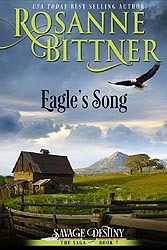 I often write older couples, and the love scenes they share are absolutely the most satisfying for me to write. It isn’t just about lust and sexual satisfaction. They aren’t just out to “get laid” and having sex and naming body parts they want their partner to toy with. They are having sex with their emotions, their memories, their hearts. There is nothing sexier than a man “wanting” to be inside a woman because it’s one way of showing her how much he adores her and wants to please her – and he once again claims her for himself and reminds her she belongs only to him. At the same time, the woman takes her man out of real love, not just because she wants to “feel good.” She wants HIM to feel good, too, and he does because he knows she wants him with every fiber of her being and because they have been having sex for years with only each other. They are still finding new ways to please each other.
I often write older couples, and the love scenes they share are absolutely the most satisfying for me to write. It isn’t just about lust and sexual satisfaction. They aren’t just out to “get laid” and having sex and naming body parts they want their partner to toy with. They are having sex with their emotions, their memories, their hearts. There is nothing sexier than a man “wanting” to be inside a woman because it’s one way of showing her how much he adores her and wants to please her – and he once again claims her for himself and reminds her she belongs only to him. At the same time, the woman takes her man out of real love, not just because she wants to “feel good.” She wants HIM to feel good, too, and he does because he knows she wants him with every fiber of her being and because they have been having sex for years with only each other. They are still finding new ways to please each other.Couples who are totally familiar with each other and know all the little things each enjoys – know where and how each other wants to be touched – and who have such a history together that memories become as much a part of sex as does the act of sex itself can be incredibly sexy. Those memories and idiosyncrasies about each other’s thoughts and needs can also lead to some wonderful banter, even during the act of sex. I used a lot of banter in the love scenes between Jake and Miranda Harkner in my Outlaw Hearts series. That banter, and being able to laugh with and at each other, only makes the sex even “sexier.” Believe me, as you get older, there are plenty of things to laugh about. If you can’t joke about the changes that occur with ageing, where is the fun in still being together and still “getting it on?”
Teasing and laughter can be just as fulfilling and tantalizing as sex between two younger people with perfect bodies. Recognizing things have changed and all that perfectness has changed with it – and being comfortable with that – only shows a love that runs far deeper and is much more beautiful than wild sex between two young and perfect people just out of lust and a desire to have a climax. It runs far deeper than how long a man lasts or how perky the woman’s breasts are. When those things don’t matter anymore, that’s real love. And truly realizing that if and when one or the other dies – or if part of the danger in the story is that one or the other might be killed - and if that loss would mean far more than losing a sex partner, then your story truly becomes a LOVE STORY. When losing your partner means losing part of your heart and soul – and literally losing a part of your very being, your very spirit – that’s the kind of love story that becomes a memorable tear-jerker.
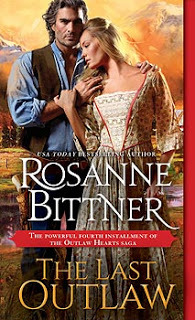
I suppose some of this stems from being older myself. I understand things that younger writers haven't even experienced yet and have no idea (or simply don’t believe) their sex lives will change, whether they like it or not. They don’t see how much more beautiful a love story between an ageing hero and heroine can be, just because of what they have been through together and how hard they try to keep their sex life vibrant and alive.
I’ve written many books that involved older couples. In WILDEST DREAMS, the hero and heroine meet at a young age and they go through many trials and tribulations that only strengthen their love until in old age it remains beautiful and fulfilling and memorable. In my SAVAGE DESTINY series and my OUTLAW HEARTS series, the same thing takes place, and I go into the lives of the hero and heroine’s children and even grandchildren – yet the primary hero and heroine remain vital and active and the main highlight in every single book of the series. By the end of the series the readers are totally, completely attached to the hero and heroine, who remain memorable to them for years after finishing the series.
I loved writing this book, and when I thought back on some of the series I’ve written, wherein the hero and heroine age together, I realized some of the best sex can be between an older man and woman who have rid themselves of the fear of commitment, and of inhibitions and unsureness that often comes with younger couples who haven’t really “lived” yet.
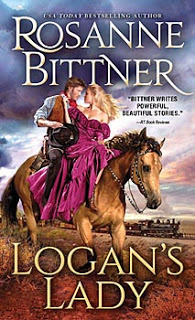
In my book LOGAN'S LADY, coming March 2019, I admit the hero is in his late twenties and is handsome and “buff,” and the heroine is only 19 and a virgin, but for that particular story, I NEEDED a young and trusting heroine in order to make what happens to her in the beginning of the book more believable. Her age and innocence were part of the plot. But my favorite writing is still series stories wherein the hero and heroine grow old together.
There is nothing as lasting and memorable as reading about a couple you can follow from youth to old age, and nothing as beautiful as that couple still enjoying each other, not just sexually, but spiritually – the kind of love wherein one knows exactly what the other is thinking and what he or she will say next. They are totally “in sync” in desire, thought and spirit. How often have you noticed the very happy look in the eyes of a couple whose picture is in the newspaper for celebrating their 50th, 60thor even 70thanniversary? And how often have you noticed that when one of them dies, the other dies not long after? That’s because they are so connected spiritually that when one dies, a big part of the other dies with them. They are like one person in heart, soul and spirit, and when one is gone, the other has trouble going on with life. That’s beautiful love.
I encourage writers to not always write just about the young and the beautiful. Older couples are far less selfish, far more forgiving and more devoted, and a love story between two older people can be far more memorable. And that’s what you want – a memorable story that will cause readers to look for other books you have written!
Published on November 16, 2018 08:00
August 22, 2018
That First Page

“That first page” is probably the hardest thing there is for writers to deal with. When it is time to start that “next” story, we sit staring at “that first page,” trying to decide what to do with it. Sometimes we just want to write “Once upon a time,” and hope that great idea strikes us then and there. But in today’s time, we need something more catchy than “once upon a time.”
We are told “that first page” can make or break us, and it truly has done both to a lot of writers.There are readers who will judge your book by “that first page,” and if you lose them there, you’re doomed. Or, if you totally catch their attention, they will likely buy your next book, as long as what follows “that first page” doesn’t disappoint them.
It isn’t easy to find just the right words for “that first page,” let alone the words for the first line. That, too, is important. But sometimes it takes a full first page to hook your reader. Most readers will give you at least that much if you don’t grab them with the first line.
The biggest problem with how to start your book is that sometimes things need to happen before you get to the real hook for a line or page. The author has to figure out how to get to that defining moment without leaving out important story events. Just always remember the READER, and that you want something that will quickly get them involved in your story.
I usually get to the good stuff right away – something that makes for a good first line or a “first page” that pulls the reader into the story. I can always find a way to give the reader more details about that event later in the book. Ninety-Nine percent of the time, the things I think I need to write first, as a build-up to my “hook,”end up being unnecessary after all. It’s important to find other ways to tell the back story that led up to what happens on “that first page” than to bore the reader with it at the beginning of the story. Telling back story later also makes for more active writing from there on, as the hero or heroine, through action and dialogue, gradually explain how he or she reached that point and ended up in that dire situation with which you opened your story.
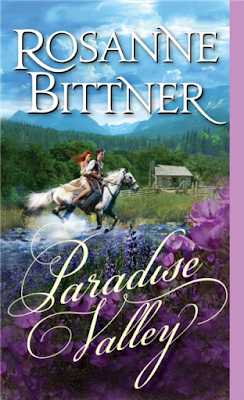
In my book PARADISE VALLEY, the story opens with Maggie Tucker digging a grave for her husband. How did he die? Why is she alone in the middle of Wyoming? No one knows at first. Readers wonder those things, and they keep reading to find out. The first chapter of my story ends with Maggie collapsing after a stranger (the hero, of course) comes along and offers to help. So by the end of Chapter 1, the reader has been introduced to both the hero and heroine, and in a way that makes them wonder about both characters and makes them want to read more. Then, as the story progresses and they get to know each other, Maggie reveals what happened, while at the same time we learn more about the hero.
I could have started PARADISE VALLEY with Maggie on her way to Oregon with her husband when they are attacked by outlaws, but I kept thinking how much more mysterious and interesting it would be to open my story with Maggie digging her husband’s grave. Plus, telling too much too soon would have brought Maggie’s husband into the picture, and I didn’t want to do that. I wanted all the attention to be on the hero, who comes along later to help Maggie. I didn’t want to give my readers a third character to have on their minds or to feel sorry for. Yes, he was Maggie’s husband, but he was not important to the story, strange as that sounds.
In my newest book, LOGAN’S LADY, (March 2019 – Sourcebooks) the story starts with the heroine (who lives with her wealthy older brother in London) involved in a huge family argument that keeps you reading to learn what it’s about and how it will be resolved. In that first chapter the reader learns a lot about the heroine’s rather brave and daring personality, and it ends with her deciding she will leave London and go to America. By then I have set the reader up to wonder what will happen when she gets there.
Chapter Two introduces rugged, ruthless, rather unkempt Logan Best, an American bounty hunter with no real home. He drops a dead body onto the floor in a sheriff’s office and asks for the bounty on the man. His attitude is, “Here he is. He was wanted dead or alive and dead was easier.”
Here I took TWO chapters to really capture my readers. The first one hooks them, the second one reels them in because they just KNOW the lovely, educated, sophisticated “Lady” from London is going to end up somehow mixed up with the rugged, ill-mannered, uneducated Logan Best, and the pairing is going to be very interesting, let alone humorous. For the first half of the book, one chapter follows Lady Elizabeth, and the next follows Logan, back and forth as each character takes an exciting path that readers can tell will lead to the inevitable “clash” of personalities and culture. There is a lot of great humor in this book, as well as adventure and, of course, romance.
You do not necessarily need a first line that “hooks” your readers, but it should at least hint at what’s to come; and by the end of that first page, what’s to come should be pretty darn obvious. Most readers will stick with the book through the first chapter, so by then make sure you have made it pretty clear where your story is going, and that it’s going to be exciting.
As a writer, don’t spend too much time fretting over “that first page.” Just consider what is most exciting about how your story begins, and even if something has to happen before that, get to the good stuff and find a way to cover the pre-events after you have your readers hooked. Sometimes you can include those events, but don’t dwell on them for pages and pages.
“That first page” can be a real challenge, I know, but remember the READER at all times. Pretend you are the reader. Where would you like the story to start in order to make you want to keep reading?
In the book I just started writing for Sourcebooks (the first in a trilogy of books set against the Outlaw Trail) the story opens with the heroine, who is lost and hungry and thirsty and alone in a wild, untamed western landscape, coming upon a gang of men about to hang a man. She ducks down out of sight, not sure what to do.
Immediately the readers will wonder - Who is the man about to be hanged? Who are the other men, and can they be trusted? Are they good, or are they outlaws? And how did the heroine end up wandering alone in lawless country without food and water? How can she possibly help the man about to be hanged? And should she help him at all? Maybe he deserves it. Either way, it’s a terrible thing to see, and when the other men ride off while the hanged man’s feet are still kicking, the heroine, of course, decides she has to do something to relieve the hanged man’s agony.
Is he worth saving? Is he truly guilty of something terrible? Or is he an innocent man who’s just been robbed? (The other men ride off with his cattle.)
This opening leaves a lot of questions readers will want answered, so they will keep reading to find out who the man is, and also – what led the heroine to the situation in which she finds herself. And, of course, will she be able to save the man? She is driven not only by a desire to help his awful suffering, but also by the fact that his accusers left the man’s horse and supplies behind when they rode off – things the heroine needs to survive.
Just always remember – “That first page” needs some kind of hook, and that the best way to start your book is with that first exciting event that leaves an opening for all kinds of exciting story that in turn, KEEPS THE PAGES TURNING! And good luck with your “first page!”
Published on August 22, 2018 11:51
August 8, 2018
Characters And Covers
In all my years of writing, I very seldom get a cover that accurately depicts my characters the way I see them. Usually the background scenery is perfect. The pose is perfect. The blurb is perfect. The colors (usually) are gorgeous. But out of all 68 books I’ve had published so far, only a few depicted the hero close to how I saw him. The ones that come to mind that (to me) came closest to my hero’s looks were the following – (I have underlined the word original because many of my books have been reissued several times, each time with a new cover.)
My three Blue Hawk books – SAVAGE HORIZONS, FRONTIER FIRES and DESTINY’S DAWN. There have been several versions of these covers, but the original covers were the best. I also liked the reissued covers that had a couple on them (a bit sexier - by Hot Damn Designs) came very close to my hero, Caleb Sax, and the heroine, Sarah.

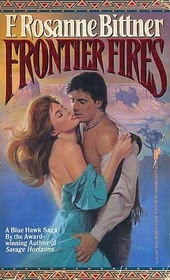

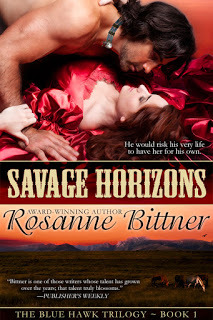


MONTANA WOMAN (Bantam Books) – the original cover was a good depiction of heroine Joline and the man she fell in love with, Clint.
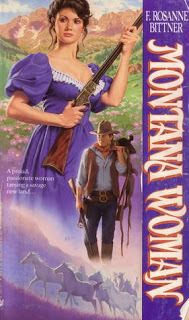
Again, the original cover for THUNDER ON THE PLAINS (Bantam Books) was a good depiction of Sunny Landers and Colt Travis; and the original cover for IN THE SHADOW OF THE MOUNTAINS correctly depicted Irene Kirkland and her Mexican lover, Ramon.

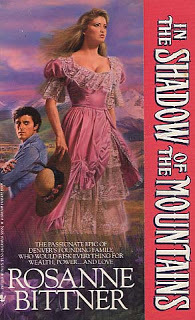
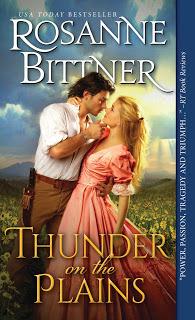

The Native American couple on my three Mystic Indian original covers – MYSTIC DREAMERS, MYSTIC VISIONS, MYSTIC WARRIORS – were also well done. The artist did a good job of matching how I saw those characters. (Covers by Tor/Forge Publishing).
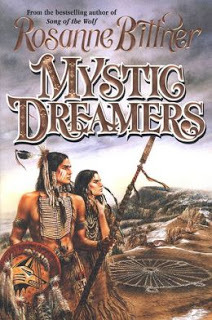
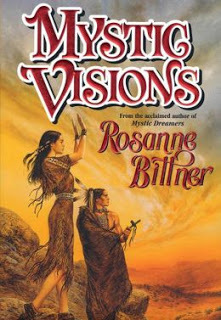
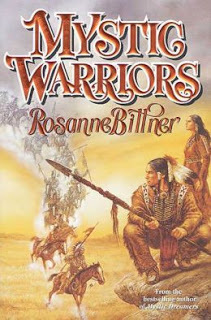
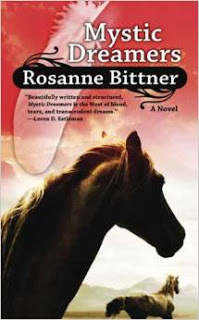
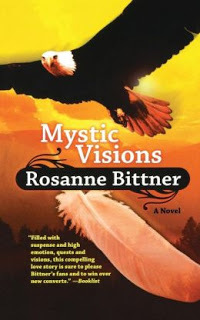

My favorite covers of all are my Outlaw books and the handsome Jake Harkner and his wife Miranda. These covers were fantastic and so eye-catching, thanks to the great Jon Paul, who is almost always spot-on and uses such beautiful and handsome models. The poses and the sweeping background seem to perfectly depict the powerful passion and romance that take place in the stories, and my favorite cover of the four is the one for DO NOT FORSAKE ME. Sometimes I just sit and stare at that cover and remember my Jake.

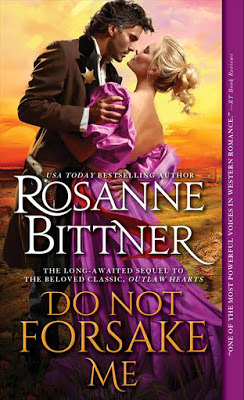
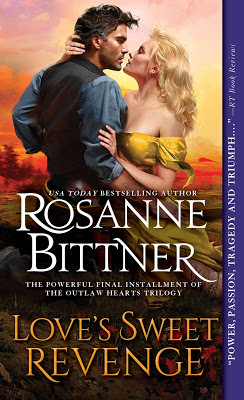

The point of this blog is how we visualize the hero and heroine in our stories vs. how they turn out on the book cover. My #1 complaint with publishers is that they don’t seem to understand the look of a true Native American - or the look of a really masculine, rugged, shaggy-haired, rough and tumble western hero with meat on his bones. Too often, he is nowhere near as big and tall and rugged as I see him in my story.
I swear, those designing today’s covers are too young to be able to envision what pioneers and “real” men, as well as strong, determined women looked like. Too often the hero on a suggested cover is too thin, too short, has too modern and perfect a haircut, and is just too “today” overall.
I want a REAL MAN on my cover – meaty, square jaw, a shadow beard, shaggy hair that he probably awkwardly cut himself, full lips, big hands, etc. 99% of the time that first suggested cover has a man on it who is nothing like I pictured my hero. I am always having to ask the publisher to please make him more rugged, taller, bigger all over, give him messy, shaggy hair, etc. I don’t want someone on my cover who looks like he eats nothing but carrots and spinach and is afraid to get his fingernails dirty. I also don’t want someone who looks like a kid who’s been dressed up by a designer to “look” like a cowboy but who very obviously is NOT!
And please, is there no one in NYC who knows what a REAL INDIAN looks like? In the 80’s Native American men on book covers were nothing more than white men with feathers in their hair. I know there are N.A. actors, but apparently very few who will model for a book cover. It’s too bad there aren’t more, but surely there are ways to put a real, genuine Native American on a book cover, or at least a white man who has very Indian features, not someone with blond hair and blue eyes! Yes, that has happened to me.
Either way, when you spend weeks, months, even years with a certain character or characters (sometimes we let certain ideas simmer that long in the depths of our minds), we writers have a very definite idea of how our characters’ features. Naturally, the publishers can’t read our minds. Neither can independent designers who create covers for indie writers. But we have a certain vision of him or her, and when the cover is designed, it is our dream that the characters look exactly the way we picture them. That’s impossible, and it’s frustrating for us. Usually, if the publisher at least comes close, I accept the cover and don’t complain, but it is still disappointing.
My salvation is hoping my readers do what I do when I read a book. I picture the hero/heroine a certain way no matter who is on the cover. Sometimes I think to myself that the cover picture doesn’t fit how I see the characters, so I just don’t let it bother me. When I am writing, I actually scan through pictures of models on the internet and pick out the ones who look very much like how I see my characters. That really helps in how I describe them. I keep that picture for inspiration and hang it or set it right by my computer as I write. I love doing that, and I love showing those pictures to my readers on Facebook. It gets them all excited to read the story!
Overall, I’ve been lucky with covers, but I still have trouble with publishers properly depicting the hero. Inevitably, I have to send back a proposed cover and ask them to “make him taller” – “make him bigger overall” – “make his hair longer – or darker – or make his skin darker.” Too often the hero comes through as hardly any taller than the heroine, his legs and arms too short, his attire all wrong. And if he’s Native American – same thing – muscular, dark, and if possible, a REAL INDIAN – not a dressed-up white man! Leave his hair long and loose. Make him powerful and give him a slightly mean look – the look of a WARRIOR, not some woman’s patsy.
Just thought I’d share. I do like the new cover for my up-coming western romance, LOGAN’S LADY (March 2019), but I had to ask them to make his hair a bit longer. His haircut was far too short and “tidy.” Even so, it is still not nearly long enough for my liking, but it truly is a beautiful cover, and when it comes to marketing a book, Sourcebooks knows better I what will sell, so I leave some of my complaints to myself. I mainly look for features I talk about in the story to make sure the couple on the cover at least comes close to how I describe them in the book. Sourcebooks is wonderful about listening to my suggestions, and LOGAN’S LADY is a very eye-catching cover showing both movement and romance.
One of the most common questions I get from readers is, “Who designs your covers?” 99% of the time the publisher creates the cover, but I have no idea exactly who does the designing or who was used for models. The only designer I can usually always recognize is Jon Paul, because his covers are so sweeping and unique, true 80’s style romance covers. I do have a say in the design as far as describing the characters for them, and I can ask for certain changes once I see the cover.
When it comes down to it, all I can truly control is the story itself, but it’s hard to live with characters so intimately and then get a cover that doesn’t come close to what I had pictured throughout the story. Thank God, so far I have had good luck with publishers listening to my suggestions and complaints, so that we end up with a happy medium – a great story and a great cover!
My three Blue Hawk books – SAVAGE HORIZONS, FRONTIER FIRES and DESTINY’S DAWN. There have been several versions of these covers, but the original covers were the best. I also liked the reissued covers that had a couple on them (a bit sexier - by Hot Damn Designs) came very close to my hero, Caleb Sax, and the heroine, Sarah.






MONTANA WOMAN (Bantam Books) – the original cover was a good depiction of heroine Joline and the man she fell in love with, Clint.

Again, the original cover for THUNDER ON THE PLAINS (Bantam Books) was a good depiction of Sunny Landers and Colt Travis; and the original cover for IN THE SHADOW OF THE MOUNTAINS correctly depicted Irene Kirkland and her Mexican lover, Ramon.




The Native American couple on my three Mystic Indian original covers – MYSTIC DREAMERS, MYSTIC VISIONS, MYSTIC WARRIORS – were also well done. The artist did a good job of matching how I saw those characters. (Covers by Tor/Forge Publishing).






My favorite covers of all are my Outlaw books and the handsome Jake Harkner and his wife Miranda. These covers were fantastic and so eye-catching, thanks to the great Jon Paul, who is almost always spot-on and uses such beautiful and handsome models. The poses and the sweeping background seem to perfectly depict the powerful passion and romance that take place in the stories, and my favorite cover of the four is the one for DO NOT FORSAKE ME. Sometimes I just sit and stare at that cover and remember my Jake.




The point of this blog is how we visualize the hero and heroine in our stories vs. how they turn out on the book cover. My #1 complaint with publishers is that they don’t seem to understand the look of a true Native American - or the look of a really masculine, rugged, shaggy-haired, rough and tumble western hero with meat on his bones. Too often, he is nowhere near as big and tall and rugged as I see him in my story.
I swear, those designing today’s covers are too young to be able to envision what pioneers and “real” men, as well as strong, determined women looked like. Too often the hero on a suggested cover is too thin, too short, has too modern and perfect a haircut, and is just too “today” overall.
I want a REAL MAN on my cover – meaty, square jaw, a shadow beard, shaggy hair that he probably awkwardly cut himself, full lips, big hands, etc. 99% of the time that first suggested cover has a man on it who is nothing like I pictured my hero. I am always having to ask the publisher to please make him more rugged, taller, bigger all over, give him messy, shaggy hair, etc. I don’t want someone on my cover who looks like he eats nothing but carrots and spinach and is afraid to get his fingernails dirty. I also don’t want someone who looks like a kid who’s been dressed up by a designer to “look” like a cowboy but who very obviously is NOT!
And please, is there no one in NYC who knows what a REAL INDIAN looks like? In the 80’s Native American men on book covers were nothing more than white men with feathers in their hair. I know there are N.A. actors, but apparently very few who will model for a book cover. It’s too bad there aren’t more, but surely there are ways to put a real, genuine Native American on a book cover, or at least a white man who has very Indian features, not someone with blond hair and blue eyes! Yes, that has happened to me.
Either way, when you spend weeks, months, even years with a certain character or characters (sometimes we let certain ideas simmer that long in the depths of our minds), we writers have a very definite idea of how our characters’ features. Naturally, the publishers can’t read our minds. Neither can independent designers who create covers for indie writers. But we have a certain vision of him or her, and when the cover is designed, it is our dream that the characters look exactly the way we picture them. That’s impossible, and it’s frustrating for us. Usually, if the publisher at least comes close, I accept the cover and don’t complain, but it is still disappointing.
My salvation is hoping my readers do what I do when I read a book. I picture the hero/heroine a certain way no matter who is on the cover. Sometimes I think to myself that the cover picture doesn’t fit how I see the characters, so I just don’t let it bother me. When I am writing, I actually scan through pictures of models on the internet and pick out the ones who look very much like how I see my characters. That really helps in how I describe them. I keep that picture for inspiration and hang it or set it right by my computer as I write. I love doing that, and I love showing those pictures to my readers on Facebook. It gets them all excited to read the story!
Overall, I’ve been lucky with covers, but I still have trouble with publishers properly depicting the hero. Inevitably, I have to send back a proposed cover and ask them to “make him taller” – “make him bigger overall” – “make his hair longer – or darker – or make his skin darker.” Too often the hero comes through as hardly any taller than the heroine, his legs and arms too short, his attire all wrong. And if he’s Native American – same thing – muscular, dark, and if possible, a REAL INDIAN – not a dressed-up white man! Leave his hair long and loose. Make him powerful and give him a slightly mean look – the look of a WARRIOR, not some woman’s patsy.
Just thought I’d share. I do like the new cover for my up-coming western romance, LOGAN’S LADY (March 2019), but I had to ask them to make his hair a bit longer. His haircut was far too short and “tidy.” Even so, it is still not nearly long enough for my liking, but it truly is a beautiful cover, and when it comes to marketing a book, Sourcebooks knows better I what will sell, so I leave some of my complaints to myself. I mainly look for features I talk about in the story to make sure the couple on the cover at least comes close to how I describe them in the book. Sourcebooks is wonderful about listening to my suggestions, and LOGAN’S LADY is a very eye-catching cover showing both movement and romance.
One of the most common questions I get from readers is, “Who designs your covers?” 99% of the time the publisher creates the cover, but I have no idea exactly who does the designing or who was used for models. The only designer I can usually always recognize is Jon Paul, because his covers are so sweeping and unique, true 80’s style romance covers. I do have a say in the design as far as describing the characters for them, and I can ask for certain changes once I see the cover.
When it comes down to it, all I can truly control is the story itself, but it’s hard to live with characters so intimately and then get a cover that doesn’t come close to what I had pictured throughout the story. Thank God, so far I have had good luck with publishers listening to my suggestions and complaints, so that we end up with a happy medium – a great story and a great cover!
Published on August 08, 2018 12:03
July 24, 2018
Possessiveness – A Roadblock to Finishing Your Book
As writers, we sometimes feel very possessive of our characters. Deep down inside, I don’t always want to share my favorite story and its characters with my readers. Sounds crazy, I know, but then I haven’t been totally sane since I started writing. I often feel a little jealous that my readers get to walk into my personal and private world, my thoughts and loves, my personal story ideas that belong only to me. As a writer, I am forced to give these things away once I finish a story. If I want to make a living at this, I have no choice. And yet for me, it’s never been about money. It’s always been about the stories, and my desire to tell them and to share them. Yet when I do, I feel as though I’ve lost a part of myself to the whole world and to a host of strangers who are reading about my very personal thoughts and dreams.
 Don’t get me wrong. I absolutely love and appreciate anyone who buys my books and loves them and tells others about them. But at the same time, once one of my books is published, I am allowing readers to walk into my characters’ lives and see into their private world. Those characters are no longer just mine. It’s kind of like giving away my own children or sharing my husband with other women!!
Don’t get me wrong. I absolutely love and appreciate anyone who buys my books and loves them and tells others about them. But at the same time, once one of my books is published, I am allowing readers to walk into my characters’ lives and see into their private world. Those characters are no longer just mine. It’s kind of like giving away my own children or sharing my husband with other women!!
I hope all of you are laughing by now, and probably shaking your heads. Why on earth would I NOT want to share my characters with others? That’s what this business is all about. And maybe readers will never understand this, but I’ll bet a lot of WRITERS understand. Until my book is published, my characters are just mine. No one else can have them. This is the reason some writers, including me, have trouble starting a book that is extra special, especially a story that has been in our minds and hearts for many years. In those cases, once we actually do write the story, it’s difficult to make others see it the way WE see it. We take it for granted they will understand our story and love it the way we do, but if we don’t do a good enough job getting all that passion and the inner struggles and psychological idiosyncrasies of our characters across to our readers, we will ruin that story that means so much to us.
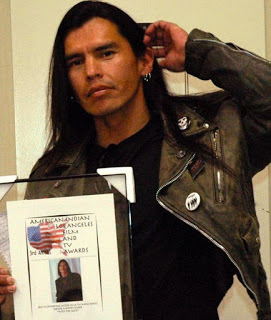
When I start that truly special story, I’m thinking, “OK, here goes. God, please let me do this right, because this story and its characters mean so much to me.” Not all of our stories come across as exciting or as beautiful or as moving as we see them when we write them. Sometimes I ask myself if I am going too far in making my hero and heroine as wonderful as I see them both. That’s part of the reason there are certain stories I’ve never written. I fear the readers will never understand my characters’ deepest feelings, the reasons they do what they do. They will never understand the passion I feel for the story. And once I let go of the story and give it over to others, I am, in a sense, finally letting go of characters who have lived with me for years and I am leaving them exposed to the whole world. They are no longer just mine. Also,once published, I can never go back and change anything. All the “what if’s” and all the events and other characters I might think of later, who should have been in the story, have no chance of ever coming to fruition.
I have never finished a book that doesn’t haunt me later as far as still questioning whether I did a good job, or whether this or that character should have done or said something differently, or if I should have used a secondary character in a plot twist I ended up not using. Sometimes it’s weeks or months or even years later that I fret over these things. So, as long as I don’t publish the book, I can still “play” with it. I can still change a character or slightly change the plot. I can live with the characters, keep changing some of their dialogue, think about other characters, changes to the plot and story events, the goals and motivations of the characters.I truly don’t want to let go of my story, and sometimes that keeps me from writing that special book in the first place.

This realization hit me over the last couple of days, as I finally decided to write my first full-length contemporary story. I’m not giving away the title of the book because I think it’s different and special. I have lived with this story and its characters since the 80’s, believe it or not. I never wrote it because I didn’t think anyone would want a contemporary story from me. However, it will be pure Bittner style, and I really think my readers will love it because of that. Also, it’s a classic “Indian romance,” similar to my historical Native American romances. The only difference is that it takes place in today’s time. Still, Native American romance is not high on the list of genre priorities – i.e. – most publishers will think it won’t sell all that well and won’t take the book. So be it. If I can’t sell it, I will publish it myself on Amazon.
There is yet another reason I have hesitated to write this book. Publishers will not know how to market it. It’s inspirational, culture clash (modern white vs. Native American culture), suspense, murder mystery, hot sex - in spite of religious facets -a hero and heroine who both come with a lot of “baggage” that could get in the way of their love for each other – a love neither of them wants but feelings they can’t fight. It even involves an opioid addiction, an abusive ex-husband, a dead ex-wife, the American Indian Movement, and embezzlement. Then there is an Ecumenical preacher involved, the D.A.R, and problems on the Pine Ridge Indian Reservation, a heroine afraid to love again, and a hero who can’t let go of his dead wife – the way she died and why she died. And throughout the story, although it’s contemporary, Native American mysticism and ancient culture give the story the feel of a story taking place in the 1800’s.
Is that enough to confuse you? Is it inspirational? Indian/white romance? Suspense? Big women’s fiction? Just plain contemporary romance? I don’t know. Neither will a publisher or marketer. Deeply religious people will enjoy the deep faith involved throughout – but they might be offended by some of the language, crime, and explicit sex involved. Those who love hot sex in their books but aren’t all that religious might not like the religious part of it. However, I can’t worry about those things. I know in my heart that I can mix all these things into a wonderful story. I am tired of trying to decide. I only know the story keeps kicking me in the rear-end, begging to be written. Yet I know that once I do write it and reach “the end,” it will no longer be just mine, especially once it’s published. It will be available to all my wonderful readers, and it will never again be just mine. That makes me a little jealous of all my readers, who get to move in on my characters and their story, and keep a little of it for themselves. Part of me wants to say, “Give it back! It’s mine! You can’t have this story or my characters. They belong to me.”
But then when the great reader comments start coming in, which I hope will happen, I’ll feel a little better about all of it. After all, I wrote the book, I made the characters come alive and I carried them close to my heart for 30 years. So, in a way the story can never belong to anyone else. 30 years is a long time to hold a story inside your head and your heart. I’ve gone through several scenarios over all these years. I even moved the location of the story. In the beginning it was supposed to take place in Arizona and involve an Apache or a Comanche Indian. I even WROTE THE BOOK under a different title about 25 years ago! But for reasons I won’t go into, that ended up not working. So, I returned to what I know best, the Lakota Sioux … and a woman from New England – two people as far removed from each other in surroundings and up-bringing and culture and life situations as day and night. That’s what I most love writing … nearly impossible situations. How do the hero and heroine manage to come together – and stay together – through turmoil and heartache and pasts that try very hard to keep them apart?
One thing that never, ever changed in these thirty years were the hero and heroine – their names and the basic plot. Never once did I see them in any other way than I did from the very beginning. The only things that changed were some of the story events, the “villain” (so to speak) and the locations involved. I figured I just couldn’t live any longer without sharing these characters and their story. That original book I wrote has disappeared forever. I wrote it before computers and I no longer know what happened to that typed manuscript. That’s probably a good thing. God wanted me to wait until I was a better writer, and He didn’t want me to go back to that first version because it wasn’t quite rightSo, I’m starting over, and once the story is finally “out there” for the world to see, I’ll try not to be jealous of my readers being able to walk into the characters’ lives. I think God means for writers to share their stories. Why else would He plant these ideas in our heads? So, I will write this book, and I will leave it up to God what happens to it. He is telling me to share this story because the very basic plot is beautiful and, I truly believe, it will have a big affect on my readers’ personal faith without being in any way “preachy.” I absolutely love the idea of mixing religious undertones with crime and sex and a faithful person’s inner struggles with their faith. All the things that happen to us in real life that try to destroy that faith are portrayed in this story.
So, “Okay, here goes. God, please let me do this right, because this story and its characters mean so much to me.”
 Don’t get me wrong. I absolutely love and appreciate anyone who buys my books and loves them and tells others about them. But at the same time, once one of my books is published, I am allowing readers to walk into my characters’ lives and see into their private world. Those characters are no longer just mine. It’s kind of like giving away my own children or sharing my husband with other women!!
Don’t get me wrong. I absolutely love and appreciate anyone who buys my books and loves them and tells others about them. But at the same time, once one of my books is published, I am allowing readers to walk into my characters’ lives and see into their private world. Those characters are no longer just mine. It’s kind of like giving away my own children or sharing my husband with other women!!I hope all of you are laughing by now, and probably shaking your heads. Why on earth would I NOT want to share my characters with others? That’s what this business is all about. And maybe readers will never understand this, but I’ll bet a lot of WRITERS understand. Until my book is published, my characters are just mine. No one else can have them. This is the reason some writers, including me, have trouble starting a book that is extra special, especially a story that has been in our minds and hearts for many years. In those cases, once we actually do write the story, it’s difficult to make others see it the way WE see it. We take it for granted they will understand our story and love it the way we do, but if we don’t do a good enough job getting all that passion and the inner struggles and psychological idiosyncrasies of our characters across to our readers, we will ruin that story that means so much to us.

When I start that truly special story, I’m thinking, “OK, here goes. God, please let me do this right, because this story and its characters mean so much to me.” Not all of our stories come across as exciting or as beautiful or as moving as we see them when we write them. Sometimes I ask myself if I am going too far in making my hero and heroine as wonderful as I see them both. That’s part of the reason there are certain stories I’ve never written. I fear the readers will never understand my characters’ deepest feelings, the reasons they do what they do. They will never understand the passion I feel for the story. And once I let go of the story and give it over to others, I am, in a sense, finally letting go of characters who have lived with me for years and I am leaving them exposed to the whole world. They are no longer just mine. Also,once published, I can never go back and change anything. All the “what if’s” and all the events and other characters I might think of later, who should have been in the story, have no chance of ever coming to fruition.
I have never finished a book that doesn’t haunt me later as far as still questioning whether I did a good job, or whether this or that character should have done or said something differently, or if I should have used a secondary character in a plot twist I ended up not using. Sometimes it’s weeks or months or even years later that I fret over these things. So, as long as I don’t publish the book, I can still “play” with it. I can still change a character or slightly change the plot. I can live with the characters, keep changing some of their dialogue, think about other characters, changes to the plot and story events, the goals and motivations of the characters.I truly don’t want to let go of my story, and sometimes that keeps me from writing that special book in the first place.

This realization hit me over the last couple of days, as I finally decided to write my first full-length contemporary story. I’m not giving away the title of the book because I think it’s different and special. I have lived with this story and its characters since the 80’s, believe it or not. I never wrote it because I didn’t think anyone would want a contemporary story from me. However, it will be pure Bittner style, and I really think my readers will love it because of that. Also, it’s a classic “Indian romance,” similar to my historical Native American romances. The only difference is that it takes place in today’s time. Still, Native American romance is not high on the list of genre priorities – i.e. – most publishers will think it won’t sell all that well and won’t take the book. So be it. If I can’t sell it, I will publish it myself on Amazon.
There is yet another reason I have hesitated to write this book. Publishers will not know how to market it. It’s inspirational, culture clash (modern white vs. Native American culture), suspense, murder mystery, hot sex - in spite of religious facets -a hero and heroine who both come with a lot of “baggage” that could get in the way of their love for each other – a love neither of them wants but feelings they can’t fight. It even involves an opioid addiction, an abusive ex-husband, a dead ex-wife, the American Indian Movement, and embezzlement. Then there is an Ecumenical preacher involved, the D.A.R, and problems on the Pine Ridge Indian Reservation, a heroine afraid to love again, and a hero who can’t let go of his dead wife – the way she died and why she died. And throughout the story, although it’s contemporary, Native American mysticism and ancient culture give the story the feel of a story taking place in the 1800’s.
Is that enough to confuse you? Is it inspirational? Indian/white romance? Suspense? Big women’s fiction? Just plain contemporary romance? I don’t know. Neither will a publisher or marketer. Deeply religious people will enjoy the deep faith involved throughout – but they might be offended by some of the language, crime, and explicit sex involved. Those who love hot sex in their books but aren’t all that religious might not like the religious part of it. However, I can’t worry about those things. I know in my heart that I can mix all these things into a wonderful story. I am tired of trying to decide. I only know the story keeps kicking me in the rear-end, begging to be written. Yet I know that once I do write it and reach “the end,” it will no longer be just mine, especially once it’s published. It will be available to all my wonderful readers, and it will never again be just mine. That makes me a little jealous of all my readers, who get to move in on my characters and their story, and keep a little of it for themselves. Part of me wants to say, “Give it back! It’s mine! You can’t have this story or my characters. They belong to me.”
But then when the great reader comments start coming in, which I hope will happen, I’ll feel a little better about all of it. After all, I wrote the book, I made the characters come alive and I carried them close to my heart for 30 years. So, in a way the story can never belong to anyone else. 30 years is a long time to hold a story inside your head and your heart. I’ve gone through several scenarios over all these years. I even moved the location of the story. In the beginning it was supposed to take place in Arizona and involve an Apache or a Comanche Indian. I even WROTE THE BOOK under a different title about 25 years ago! But for reasons I won’t go into, that ended up not working. So, I returned to what I know best, the Lakota Sioux … and a woman from New England – two people as far removed from each other in surroundings and up-bringing and culture and life situations as day and night. That’s what I most love writing … nearly impossible situations. How do the hero and heroine manage to come together – and stay together – through turmoil and heartache and pasts that try very hard to keep them apart?
One thing that never, ever changed in these thirty years were the hero and heroine – their names and the basic plot. Never once did I see them in any other way than I did from the very beginning. The only things that changed were some of the story events, the “villain” (so to speak) and the locations involved. I figured I just couldn’t live any longer without sharing these characters and their story. That original book I wrote has disappeared forever. I wrote it before computers and I no longer know what happened to that typed manuscript. That’s probably a good thing. God wanted me to wait until I was a better writer, and He didn’t want me to go back to that first version because it wasn’t quite rightSo, I’m starting over, and once the story is finally “out there” for the world to see, I’ll try not to be jealous of my readers being able to walk into the characters’ lives. I think God means for writers to share their stories. Why else would He plant these ideas in our heads? So, I will write this book, and I will leave it up to God what happens to it. He is telling me to share this story because the very basic plot is beautiful and, I truly believe, it will have a big affect on my readers’ personal faith without being in any way “preachy.” I absolutely love the idea of mixing religious undertones with crime and sex and a faithful person’s inner struggles with their faith. All the things that happen to us in real life that try to destroy that faith are portrayed in this story.
So, “Okay, here goes. God, please let me do this right, because this story and its characters mean so much to me.”
Published on July 24, 2018 21:01
July 10, 2018
Focus: The Key to Finishing Your Book
 I have talked to many “would-be” writers who never seem to finish a book and/or never even start one. One thing that seems to be a common problem in this situation is that many new writers have so many story ideas in their heads that they can’t decide which one to work on. Or, even if they have only one idea, they can’t decide on a firm direction for their story. They spend months, sometimes years, trying to decide how to flesh out their story. Often, this indecision ends up being an excuse to not write anything at all. They think they have accomplished something just by having all those great ideas, or just that one great idea. I have spoken with too many new writers who claim that as soon as they decide what to work on, or how to develop their story, they will finish their book and start submitting. Sometimes a year or so later, I learn that they still haven’t decided which story to write, or they have “started” 2 or 3 different stories and never finished any of them, or they still haven’t moved past the first couple of chapters of that one great idea.
I have talked to many “would-be” writers who never seem to finish a book and/or never even start one. One thing that seems to be a common problem in this situation is that many new writers have so many story ideas in their heads that they can’t decide which one to work on. Or, even if they have only one idea, they can’t decide on a firm direction for their story. They spend months, sometimes years, trying to decide how to flesh out their story. Often, this indecision ends up being an excuse to not write anything at all. They think they have accomplished something just by having all those great ideas, or just that one great idea. I have spoken with too many new writers who claim that as soon as they decide what to work on, or how to develop their story, they will finish their book and start submitting. Sometimes a year or so later, I learn that they still haven’t decided which story to write, or they have “started” 2 or 3 different stories and never finished any of them, or they still haven’t moved past the first couple of chapters of that one great idea.Getting published doesn’t work that way. Finishing a book means FOCUSING on just one idea and developing it into book length, perfecting it, having it edited and submitting that finished book. Or, you move on from Chapter 1 or 2 or wherever you are in that one great book and let the story “happen.” I have learned over my 35 years of writing that if you are stuck with where to go with your story, just FOCUS AND KEEP WRITING. You’d be surprised what comes to you if you just let your characters “do their thing.” If you have trouble deciding which story to write, FOCUS on the story that tugs at you more than the others and set aside the rest of your ideas for a later time – maybe AFTER YOU HAVE FINISHED AND SUBMITTED the one book you focused on. If you don’t FOCUS on one idea, or FOCUS on continuing your story, you will never finish a book, in which case you will never SELL a book.
When you let ideas simmer, or decide you need to think about your one great idea a little longer, you end up doing everything else but write, like cleaning house even if it doesn’t need cleaning, doing yard work, watching TV, wasting too many hours on Facebook or YouTube, straightening your desk, making coffee, thinking about how you just can’t write yet because you are still confused over all those “ideas,” drinking the coffee you made earlier, going through your notes, visiting, daydreaming about being a best seller (which will never happen if you don’t settle down and write a book), thinking about titles for books still not written, setting up a filing system, attending meetings about how to write (again, nothing written – just learning the “how-to’s”), arguing politics, baking a cake, doing your nails, meeting friends or other writers for lunch, going to a movie, reading someone else’s book in hopes of coming up with an idea from that - you name it - every author has done it – anything but write.
There comes a time when you simply must FOCUS. Start the book that begs the hardest to be written – the book that pulls at your heart the most – and then concentrate just on that story alone, then FINISH THE BOOK! And finish it as quickly as you can. DO NOT waste time perfecting every line or chapter. That is JUST ANOTHER EXCUSE to never quite finish a story. Constant editing is another way to lose FOCUS – and that FOCUS should be actually FINISHING YOUR BOOK! That’s when you take a deep breath and smile over the fact that you actually wrote a whole book. It is THEN that you go back to page one and start editing. And be careful not to waste six months or more just editing and editing and editing. If you can’t decide if your work is perfect enough to send in, let someone else read it and help you with the editing. DO NOT let your finished book just lie there because you can’t decide if it’s good enough. And DO NOT start a second book in the meantime. Before you know it, that first book will be neglected for months and you will lose interest in it. And by then you might have started yet another story and have lost interest in editing and submitting the first book AND the second one!
Take a deep breath, pick an idea, shove the other ideas into a drawer, or save them on the computer, but LEAVE THEM ALONE UNTIL YOU FINISH A WHOLE BOOK. FOCUS! FOCUS! FOCUS! And while you are at it, FOCUS on your writing goals. The most important goal should be to START JUST ONE STORY, DO YOUR RESEARCH JUST FOR THAT STORY, WRITE EVERY DAY, FINISH AND EDIT YOUR STORY, AND SUBMIT your book for publication, or get it posted as an independent writer. THAT’S when you open that drawer or that computer file and pick out your next favorite idea and FOCUS on that one while you continue submitting the first book.
Remember, every book you write is a learning experience, which means each next book might be even better than the last one. If you FOCUS on story #2 and then story #3 while you have #1 and #2 floating around out there in hopes of a sale, you will always have yet another book to submit. Publishers like to know you can write more than one book. And you will feel more confident with each new book, realizing it is possible you might sell #1 and/or #2. Or, if you are publishing your own books, you will have more and more choices for your readers’ delight. More books mean more income – and more chances of one of them becoming a best-seller! And don’t be afraid to submit for fear of being turned down. I doubt there is a living writer who has not suffered rejections. It’s just one facet of the business of writing. Get over it! We’ve all been through it. YOU WILL NEVER SELL IF YOU DON’T FINISH A BOOK AND SUBMIT YOUR WORK.
FOCUS! FOCUS! FOCUS! It could end up in a SALE! SALE! SALE!

Published on July 10, 2018 21:01
June 19, 2018
The Value of Those Voices in the Night
A few nights ago I woke up with a great idea for a blog. By morning, I forgot it! I am so upset that I didn’t write it down. That in turn gave me a different idea for a blog, so I’m writing about the value of remembering to write down a good idea RIGHT AWAY! Those voices in the night are simply the product of your writer’s brain offering up ideas.
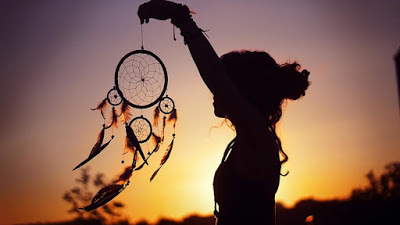
How often have you dreamed something or had a great thought in the middle of the night? It was so real and so vivid that you were sure you would remember every detail in the morning. Then morning came, and you wanted to tell your hubby or a friend about it … or hurry and write it down … and alas! It was gone! You could remember only a tiny bit of it – and sometimes none of it!
Sometimes it isn’t even a dream. It can simply be a great thought that has come to you in the middle of the night when you are staring into the darkness, eyes wide open, whether with worry, or because you have been struggling with how to solve the mess you’ve written your characters into without knowing how to get them out of it. Even then, by morning, that great idea can be completely gone.
As a writer, these dreams or deep thoughts can be valuable. You soon learn that you had better keep a note pad beside your bed and hope you actually wake up quickly enough from your dream to preserve it, because it just might make a great story plot. Or, if you are lying awake and come up with just the right answer for whatever you need for your story, you can quickly write it down then and there. Believe me, even though you are awake, the thought can still be gone when morning comes.
I have learned that even when a good idea strikes in the middle of the day, I had better quickly make note of it because life gets so busy that thought can go away as fast as it came to me. If you don’t have pencil and paper on hand, remember your cell phone. Almost everyone has their cell phone with them all the time, including by the bed stand as they sleep. I have often used the “Notes” section in my cell phone to jot down an idea. The last time we drove west, I took notes in my phone as we passed through certain areas out west. I wanted to remember the landscape in those particular areas. I took pictures and also kept notes because pictures don’t always do justice to particular details you want to remember.
Of course, I come from a time when there were no cell phones or even computers! One morning while getting ready for work, a thought came to me that I just knew would make a good story. I had no cell phone to quickly make a note with – and no paper and pen ready. I was drying my hair and was running late, so I wrote the idea down on the back of my check book with an eyebrow pencil! For some reason I always remembered that moment. The idea turned into one of my all-time favorite books – OUTLAW HEARTS – and 20 years later I wrote the sequel plus two more and it became a 4-book series. I want to write a fifth book, and also a story about the hero’s grandson. And it all came from an idea written down with an eyebrow pencil on a check book. I would give anything to still have that note to look at just for the fun of it – and to show to other writers.
Don’t underestimate the value of those voices in the night … or even those quick ideas that come during the day. WRITE THEM DOWN by any means possible! I am one of those people who is constantly daydreaming, so I have to be ready at all times for that new idea. A writer’s mind is always spinning with ideas and characters, no matter what else they are doing at the time. Pad and paper, or that good ole’ cell phone, are a must 24/7! Listen to those voices in the night and you just might come up with a best seller!

How often have you dreamed something or had a great thought in the middle of the night? It was so real and so vivid that you were sure you would remember every detail in the morning. Then morning came, and you wanted to tell your hubby or a friend about it … or hurry and write it down … and alas! It was gone! You could remember only a tiny bit of it – and sometimes none of it!
Sometimes it isn’t even a dream. It can simply be a great thought that has come to you in the middle of the night when you are staring into the darkness, eyes wide open, whether with worry, or because you have been struggling with how to solve the mess you’ve written your characters into without knowing how to get them out of it. Even then, by morning, that great idea can be completely gone.
As a writer, these dreams or deep thoughts can be valuable. You soon learn that you had better keep a note pad beside your bed and hope you actually wake up quickly enough from your dream to preserve it, because it just might make a great story plot. Or, if you are lying awake and come up with just the right answer for whatever you need for your story, you can quickly write it down then and there. Believe me, even though you are awake, the thought can still be gone when morning comes.
I have learned that even when a good idea strikes in the middle of the day, I had better quickly make note of it because life gets so busy that thought can go away as fast as it came to me. If you don’t have pencil and paper on hand, remember your cell phone. Almost everyone has their cell phone with them all the time, including by the bed stand as they sleep. I have often used the “Notes” section in my cell phone to jot down an idea. The last time we drove west, I took notes in my phone as we passed through certain areas out west. I wanted to remember the landscape in those particular areas. I took pictures and also kept notes because pictures don’t always do justice to particular details you want to remember.
Of course, I come from a time when there were no cell phones or even computers! One morning while getting ready for work, a thought came to me that I just knew would make a good story. I had no cell phone to quickly make a note with – and no paper and pen ready. I was drying my hair and was running late, so I wrote the idea down on the back of my check book with an eyebrow pencil! For some reason I always remembered that moment. The idea turned into one of my all-time favorite books – OUTLAW HEARTS – and 20 years later I wrote the sequel plus two more and it became a 4-book series. I want to write a fifth book, and also a story about the hero’s grandson. And it all came from an idea written down with an eyebrow pencil on a check book. I would give anything to still have that note to look at just for the fun of it – and to show to other writers.
Don’t underestimate the value of those voices in the night … or even those quick ideas that come during the day. WRITE THEM DOWN by any means possible! I am one of those people who is constantly daydreaming, so I have to be ready at all times for that new idea. A writer’s mind is always spinning with ideas and characters, no matter what else they are doing at the time. Pad and paper, or that good ole’ cell phone, are a must 24/7! Listen to those voices in the night and you just might come up with a best seller!
Published on June 19, 2018 21:01
June 5, 2018
Riding The Outlaw Trail …
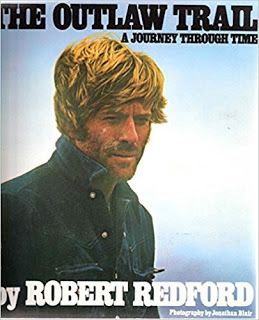
I am currently reading THE OUTLAW TRAIL by Robert Redford (yes – the actor). In the early 1970’s he actually rode the old Outlaw Trail so that he could experience what it was like and then write about it. The trail runs from Canada to Mexico. Mr. Redford started at Hole-In-The-Wall in northern Wyoming, and traveled mostly by horseback to south of Robber’s Roost in southern Utah. There couldn’t be more spectacular pictures of the fantastic landscape involved along the Outlaw Trail than in this incredibly beautiful book. It’s a big, roughly 9” x 11,” hard cover, with a great sexy picture of Mr. Redford on the cover and pictures and conversations with some very crusty and rugged characters inside the book. I can already see in this book the nostalgia Mr. Redford had for the “Old West,” which I am sure prompted his starring in the movie THE ELECTRIC HORSEMAN , where he steals a beautiful but doped-up show horse out of Las Vegas and rides the horse into the wild plains, where he turns it loose and lets it run free with mustangs.

My reason for reading this book is to prepare to write my three new books for Sourcebooks, which will all be set against the Outlaw Trail in one way or another. Each story will bring in a cameo of sorts – of various characters from other books I’ve written – characters who also visited the Outlaw Trail at some point in their story. My new heroes will have short encounters with these other characters, like with Moses Tucker from LAWLESS LOVE , Sage Lightfoot from PARADISE VALLEY and Jake Harkner from my OUTLAW series. I am going to have to study these older books in order to get my time frame right in the new stories, but most of all I want to drench myself in the landscape and history of the Outlaw Trail, where famous outlaws like Butch Cassidy and the Sundance Kid hung out at times. I am hoping to have my new heroes not only meet some of my other characters, but also some “real” outlaws of the time.

I have loved America’s Old West all my life, probably because I grew up watching westerns, both in movies and on television. My “hero” when I was young was Matt Dillon from GUNSMOKE , and of course my movie heroes were Clint Eastwood, John Wayne and Tom Selleck (who starred in a lot of movies based on stories by Louis L’Amour (my mentor) and in QUIGLEY DOWN UNDER , set in Australia’s “West,” which is very much like America’s). PALE RIDER is my favorite Clint Eastwood movie, and ROOSTER COGBURN my favorite John Wayne movie, although his movie THE COWBOYS was also so realistic, wonderful, yet so sad, as was THE MAN WHO SHOT LIBERTY VALANCE . And saddest but most realistic of all was THE SHOOTIST .
I loved Kathryn Hepburn’s description of John Wayne’s character in ROOSTER COGBURN . He wore a patch over one eye and was a rough and rugged old lawman who killed a lot of men who all “deserved it,” much like my Jake would say of most of the men he killed. Katheryn’s description in the movie actually fits John Wayne himself …
“Rueben, I have to say it … living with you has been an adventure any woman would relish for the rest of time. I look at you with your burned-out face, and your big belly, and your bear-like paws … and your shining eye … and I have to say you are a credit to the whole male sex and I’m proud to have you for my friend.”
Sounds like most western heroes – and certainly like my Jake Harkner, except he didn’t have a big belly or wear a patch over one eye. Be that as it may, that description so envelops the western hero, whether a lawman or an outlaw, and that ruggedness is what it took to survive the Outlaw Trail. I am so excited to be writing about this era and the several historic locations along that trail, like Hole-In-The-Wall, Brown’s Park and Robber’s Roost.
America’s western landscape is absolutely spectacular. “Big Sky Country” hardly does justice as a description for such an immense world, where there are places you can see for fifty miles or more. Such is the landscape along the Outlaw Trail, incredibly endless grassland walled by mammoth red cliffs, snow-capped mountains, and places where caves and crevasses once hid wanted men – places where lawmen dared not go for fear of never returning.
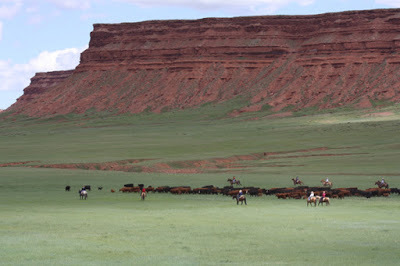
A couple of the things printed in Mr. Redford’s book really touched me. From the book’s Forward are these words from Mr. Redford:
“… From 1870 to 1910 it (the Outlaw Trail) was a lawless area where any man with a past or a price on his head was free to roam “nameless,” provided he was good with a gun, fast on a horse, cleverer than the next man, could run as fast as he could cheat, trusted no one, had eyes in back of his head and a fool’s sense of adventure. No holds were barred on this trail, and old age was a freak condition.” … Robert Redford, THE OUTLAW TRAIL, Copyright 1976, Grosset& Dunlap, NYC.
There is also a beautiful excerpt from the song, OLD COWBOY (October 31, 1938), by Matt Warner, who was once sheriff of Price, Utah and a former outlaw:
… From the range forever your voice is still. No more does its echo resound from the hills – Old Cowboy.
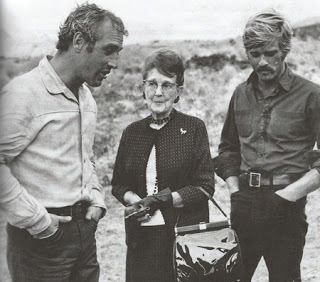 Lula (Parker) Betenson with Robert Redford & Paul Newman
Lula (Parker) Betenson with Robert Redford & Paul NewmanThe ending of this book is so touching. Mr. Redford visits with Lula (Parker) Betenson, the 94-year-old sister of Butch Cassidy, whose real name was Robert Leroy Parker. (This visit would have taken place around 1975). There were 13 children in the Parker family, and Lula was younger than Butch, 6 years old when he left home. She saved all his letters and some of his personal belongings. Mr. Redford describes her as still beautiful, with eyes that showed her to be young at heart. They met at the old Parker cabin near Circleville, Utah. It’s kind of sad how he describes the old cabin at the end of his talk with Lula.
“The house is old. Gray-splintered sagging wood. The window frames are bleached, and vandalism and target practice have left smashed panes. The rooms are small, like all the rooms in all the buildings of this kind we have visited. In the back are the corrals – gray, shaggy, tilting against the burnt yellow and gray hills beyond. It’s all that’s left. Lula and the corrals and the hills. There’s no more.” …Robert Redford, THE OUTLAW TRAIL, Copyright 1976, Grosset & Dunlap, NYC.
That description hit me as applicable to the Outlaw Trail itself. Much of it is gone now, buried under towns and asphalt, coal strip mines, high-wire electric lines and steam rising from power plants. The buffalo and most mustangs are gone. Too many ranchers have been forced out of business due to taxes and regulations, land grabs and big corporations that wiped them out. Some of the peace of dead silence is gone, but in the wide-open places between the scattered towns and away from industry and windmills and humming electric lines, the dead silence is still there. I’ve been to some of these places – places where the silence is so penetrating it almost hurts your ears. You literally strain to hear something.
And there was a time when most of the American West was just that … total silence, except for the occasional howling of wolves, the snorting and rutting of buffalo, the prayer song of an Indian, the ripple of a mountain stream, the thunder of a herd of mustangs, the cry of an eagle … and the soft groan of an almost-constant wind. And those are my words, not Mr. Redford’s.
I think you will enjoy my Outlaw Trail books once they are written and published, and I hope you rent or buy some of the movies listed here, most of which also beautifully display America’s magnificent western landscape in many of the scenes in the movies, especially PALE RIDER and ROOSTER COGBURN . Watch my web site for news of books to come … and you just might want to re-read LAWLESS LOVE , PARADISE VALLEY and my OUTLAW series, because some of those characters will show up in my new stories!
Published on June 05, 2018 21:01
May 22, 2018
Nostalgia
We all get a case of nostalgia once in a while - you know, another one of those “diseases” they are always talking about on TV. If your ear itches, it’s a disease. If your eyes get a little dry, it’s a disease. Used to be a disease was something serious that you usually died from. Now the drug industry wants you to think a mosquito bite is a disease.

Be that as it may, there is no “cure” for nostalgia. It comes and goes and usually never kills anyone, unless it is so extreme that it becomes unbearably depressing. I’ve never been that “nostalgic,” but I have shed tears a few times – a side affect of this “disease.” I’m sure this is far more a disease of old age than anything else – like aching joints and dimming eyesight (I have neither so far). But still, as you get older, you can’t help but become nostalgic about the past, about your children, who are coming close to being “old” themselves, and your grandchildren, who were four years old last year and now are twenty.
My major nostalgia, believe it or not, is for my characters. I stand and look over the 70 or so books I’ve written, and I remember every hero and heroine and their basic story. I think and think, yet I can’t remember when in heck I wrote all those books amid full time work, raising two active boys and three active grandsons, shopping, cleaning, running kids around, mowing, cooking, doctor appointments, reading hundreds of books for research, taking thousands of pages of notes, saving and categorizing hundreds of articles for “story ideas,” being a wife to my husband, a mother to my sons, a daughter to my ageing mother, a sister, an aunt, a niece, and, of course, a writer. I’ve moved my office from a small bedroom, to a small living room, to a different small bedroom, to a separate cabin on our lake property, back to the small living room, to the new house we bought (30 years ago), to a huge apartment office at the family business and back to the new house just a year ago. This house is so crowded that I dare any burglar to find a place to hide in it. Every closet and every corner, nook and cranny is filled because of all the books, equipment, desks, drawers, and most of the things I once had in my big office now being packed into my house.
I look at all this and I sit down and add it all up – 70 books – at least 28,000 pages – 8,400,000 words – and that’s just once through for each book. It doesn’t include all the editing and re-writes, notes, outlines and synopses, as well as magazine articles I’ve written, blogs and speeches. I suspect you could pretty much double the above numbers because of all the re-writes, let alone the fact that I also wrote 7 big books that never sold and probably a hundred poems.
Through it all, I’ve created and lived with some wonderful characters who came alive for me in each book and from then on remained alive to me. They live in my dreams, my daytime fantasies, and in my mind and heart 24/7. There are some whom I loved beyond measure, like Zeke Monroe from my Savage Destiny books and Jake Harkner from my Outlaw books. You can’t cover 20 to 40 years in a series of books, living with the same characters throughout, without falling in love with them and truly, achingly missing them when you finish the series. Some characters were so alive for me that I truly felt the really lived and their spirits were speaking through me as I brought them back to life. I laughed and I cried with them. I felt their pain and their joy, and yes, I even made love to some of my heroes.
Here’s the kicker – and I’ve always said that I am a bit of a nut case over my characters – but I can look at one of my book covers and think about that hero and feel loved and comforted and safe. I can “feel” his arms around me. He loves me no matter what. He truly cares about me and wants to protect me. He never gets angry with me. I am his and I am adored and I am safe. That hero would never let anything bad happen to me. “Real” life goes away and I am loved just for me.
The nostalgia comes when I realize how special these characters and their stories are to me, but are they special to anyone else? Why did I go to all this work over all these years (since 1979) to write these stories, just to see them here today and gone tomorrow? And then I hear from my readers, and I see the fabulous comments posted on Amazon or Goodreads, and I know I am touching other peoples’ lives with my books, and I am writing characters who are special and memorable to others besides myself. And I remember that when I am gone from this earth, my books will continue to sell, probably for years. My Savage Destiny books (my beloved Zeke) are 35 years old and still selling, in some cases out-selling most of my other books! So in a way I will live on through all those books, and that makes me nostalgic, too.
I love writing so much that I literally pray God will keep me healthy so I can continue to write and create even more wonderful characters. And thank God for my back list, which leaves me with a host of titles yet to be reissued with new covers, so my books continue being published over and over and I continue to find even more readers. That means “Bittner” books will be around for a long, long time after I’m gone, and my children and grandchildren will benefit from their sales.
I feel like when I die I will be abandoning all my characters, who depended on me to write their stories and to keep promoting them so that they, too, never die. And yet I feel happy at thinking that when I am gone, I will actually meet some of these wonderful characters in the after-life and find out they really did exist. Who knows?
So many years. So many stories. So many characters. So many different publishers and editors over the years. So much research. And thousands of hours sitting in front of first an old-fashioned typewriter, then an electric typewriter, then a memory typewriter, and then a computer, from the old boxy kind to today’s flat-screen monitors and wireless keyboards. Where does all the time go? I should have arthritis in my hands, but I don’t. I should be tired of doing this, but I’m not. I will NEVER get tired of writing, and I have many more stories “in my head,” waiting to be told. As long as I have readers clamoring for more, I’ll keep giving them more, and as I said in my previous blog, writing those books will be a “joy” – never a “job.”
I want to thank all my wonderful, devoted readers for making me feel appreciated for all the years and years of hard work, and for feeling the same way I do about my characters … that they truly once lived and will continue to live on in their hearts. My readers and their comments are “medicine” for my “disease” of nostalgia.

Be that as it may, there is no “cure” for nostalgia. It comes and goes and usually never kills anyone, unless it is so extreme that it becomes unbearably depressing. I’ve never been that “nostalgic,” but I have shed tears a few times – a side affect of this “disease.” I’m sure this is far more a disease of old age than anything else – like aching joints and dimming eyesight (I have neither so far). But still, as you get older, you can’t help but become nostalgic about the past, about your children, who are coming close to being “old” themselves, and your grandchildren, who were four years old last year and now are twenty.
My major nostalgia, believe it or not, is for my characters. I stand and look over the 70 or so books I’ve written, and I remember every hero and heroine and their basic story. I think and think, yet I can’t remember when in heck I wrote all those books amid full time work, raising two active boys and three active grandsons, shopping, cleaning, running kids around, mowing, cooking, doctor appointments, reading hundreds of books for research, taking thousands of pages of notes, saving and categorizing hundreds of articles for “story ideas,” being a wife to my husband, a mother to my sons, a daughter to my ageing mother, a sister, an aunt, a niece, and, of course, a writer. I’ve moved my office from a small bedroom, to a small living room, to a different small bedroom, to a separate cabin on our lake property, back to the small living room, to the new house we bought (30 years ago), to a huge apartment office at the family business and back to the new house just a year ago. This house is so crowded that I dare any burglar to find a place to hide in it. Every closet and every corner, nook and cranny is filled because of all the books, equipment, desks, drawers, and most of the things I once had in my big office now being packed into my house.
I look at all this and I sit down and add it all up – 70 books – at least 28,000 pages – 8,400,000 words – and that’s just once through for each book. It doesn’t include all the editing and re-writes, notes, outlines and synopses, as well as magazine articles I’ve written, blogs and speeches. I suspect you could pretty much double the above numbers because of all the re-writes, let alone the fact that I also wrote 7 big books that never sold and probably a hundred poems.
Through it all, I’ve created and lived with some wonderful characters who came alive for me in each book and from then on remained alive to me. They live in my dreams, my daytime fantasies, and in my mind and heart 24/7. There are some whom I loved beyond measure, like Zeke Monroe from my Savage Destiny books and Jake Harkner from my Outlaw books. You can’t cover 20 to 40 years in a series of books, living with the same characters throughout, without falling in love with them and truly, achingly missing them when you finish the series. Some characters were so alive for me that I truly felt the really lived and their spirits were speaking through me as I brought them back to life. I laughed and I cried with them. I felt their pain and their joy, and yes, I even made love to some of my heroes.
Here’s the kicker – and I’ve always said that I am a bit of a nut case over my characters – but I can look at one of my book covers and think about that hero and feel loved and comforted and safe. I can “feel” his arms around me. He loves me no matter what. He truly cares about me and wants to protect me. He never gets angry with me. I am his and I am adored and I am safe. That hero would never let anything bad happen to me. “Real” life goes away and I am loved just for me.
The nostalgia comes when I realize how special these characters and their stories are to me, but are they special to anyone else? Why did I go to all this work over all these years (since 1979) to write these stories, just to see them here today and gone tomorrow? And then I hear from my readers, and I see the fabulous comments posted on Amazon or Goodreads, and I know I am touching other peoples’ lives with my books, and I am writing characters who are special and memorable to others besides myself. And I remember that when I am gone from this earth, my books will continue to sell, probably for years. My Savage Destiny books (my beloved Zeke) are 35 years old and still selling, in some cases out-selling most of my other books! So in a way I will live on through all those books, and that makes me nostalgic, too.
I love writing so much that I literally pray God will keep me healthy so I can continue to write and create even more wonderful characters. And thank God for my back list, which leaves me with a host of titles yet to be reissued with new covers, so my books continue being published over and over and I continue to find even more readers. That means “Bittner” books will be around for a long, long time after I’m gone, and my children and grandchildren will benefit from their sales.
I feel like when I die I will be abandoning all my characters, who depended on me to write their stories and to keep promoting them so that they, too, never die. And yet I feel happy at thinking that when I am gone, I will actually meet some of these wonderful characters in the after-life and find out they really did exist. Who knows?
So many years. So many stories. So many characters. So many different publishers and editors over the years. So much research. And thousands of hours sitting in front of first an old-fashioned typewriter, then an electric typewriter, then a memory typewriter, and then a computer, from the old boxy kind to today’s flat-screen monitors and wireless keyboards. Where does all the time go? I should have arthritis in my hands, but I don’t. I should be tired of doing this, but I’m not. I will NEVER get tired of writing, and I have many more stories “in my head,” waiting to be told. As long as I have readers clamoring for more, I’ll keep giving them more, and as I said in my previous blog, writing those books will be a “joy” – never a “job.”
I want to thank all my wonderful, devoted readers for making me feel appreciated for all the years and years of hard work, and for feeling the same way I do about my characters … that they truly once lived and will continue to live on in their hearts. My readers and their comments are “medicine” for my “disease” of nostalgia.
Published on May 22, 2018 21:01
May 8, 2018
Writing – A Joy, Not A Job
I was answering someone else’s blog a couple of days ago, and I ended with saying writing should be a joy, not a job. Soon as I wrote that, I realized it was a great topic for my own blog!

I write every chance I get, any time of day, deep in the night when I can’t sleep, often while my hubby is watching a movie. I just put on my ear phones and listen to my favorite “mood” music and shut out the TV.
I just sold three more books (still to be written) to Sourcebooks, which, when finished, will bring my total published books to 72 over about 39 years. Those years have gone so fast. I have no memory of even writing many of those books. It’s all kind of a blur. But I do remember the plot of every book. Sometimes I have to look at the blurb on the back to remind myself of the names of the characters, but most of the actual story quickly comes back to me.
I squeezed most of those books into my life while working full time and raising two active boys, then spending a lot of time with grandchildren. I’ve always led a very, very busy life, and when working full time, I often sat up after everyone else went to bed and wrote until 1 or 2 am – then got up at 5 am and put in another long day.
Yes, it was hard. Very hard. Yet I enjoyed every word I wrote because I love writing and have loved every character I’ve ever written.
And that’s what writing should be to any writer – a JOY, not a JOB. You should be so “into” your characters that you can’t wait to get back to them and continue their story. In my case, I want to see what happens to them, because even I don’t know until I go into the “next” chapter. I don’t use an outline and don’t plan out my books. I just start one and let the characters take me where they want to go.
Too often I talk to other writers who have been working on the same book for years. I don’t understand that. If you aren’t interested enough in your book to finish it and start submitting it, then don’t write it at all. Start a different story, something that keeps you so excited that, like a reader who can’t put down what she’s reading, you can’t stop writing your story!
I can tell those writers who look at their writing as more of a job than a joy. They struggle to find the time to write and come up with all kinds of excuses not to sit down and keep going. My problem is usually finding time to do everything else, but I never have trouble finding time to write. My stories and their characters are with me 24/7, 7 days a week. When we stay at our condo in Vegas winters, while my husband plays poker, I sit at Starbucks and proofread my daily writing. Why waste money gambling when I could be making money on my writing?
A true writer never sees her work as a job she dreads or struggles to find time for. A true writer can’t wait to get back to the computer, and she not only works on the story at hand, but she also has more stories in her head just itching to be told. A true writer never runs out of ideas, and she is so excited about the story she is working on that she gets in as much writing time as possible every day. She doesn’t sit watching TV for 3-4 hours every night. She sits and writes 3-4 hours every night. If you have time to do nothing but watch TV, then you have time to write. Once you get into the groove of working writing into your day, it gets easier and easier.
If you let writing be a JOY and not a JOB, you’ll find you can produce a lot more books in a lot less time. That joy has allowed me to produce an average of two big books a year for the last 35 years, and all those older books are still selling, a lot of them having already been reissued two and three times over the years. That’s how you build your name, which in turn builds your sales.
Write! Write! Write! You don’t get published by wishing it, and you don’t get published by working on the same book for years. I’ve heard some writers say they don’t want to “work” that hard. Honey, if you’re calling it work, you aren’t a real writer. Let it be a JOY!

I write every chance I get, any time of day, deep in the night when I can’t sleep, often while my hubby is watching a movie. I just put on my ear phones and listen to my favorite “mood” music and shut out the TV.
I just sold three more books (still to be written) to Sourcebooks, which, when finished, will bring my total published books to 72 over about 39 years. Those years have gone so fast. I have no memory of even writing many of those books. It’s all kind of a blur. But I do remember the plot of every book. Sometimes I have to look at the blurb on the back to remind myself of the names of the characters, but most of the actual story quickly comes back to me.
I squeezed most of those books into my life while working full time and raising two active boys, then spending a lot of time with grandchildren. I’ve always led a very, very busy life, and when working full time, I often sat up after everyone else went to bed and wrote until 1 or 2 am – then got up at 5 am and put in another long day.
Yes, it was hard. Very hard. Yet I enjoyed every word I wrote because I love writing and have loved every character I’ve ever written.
And that’s what writing should be to any writer – a JOY, not a JOB. You should be so “into” your characters that you can’t wait to get back to them and continue their story. In my case, I want to see what happens to them, because even I don’t know until I go into the “next” chapter. I don’t use an outline and don’t plan out my books. I just start one and let the characters take me where they want to go.
Too often I talk to other writers who have been working on the same book for years. I don’t understand that. If you aren’t interested enough in your book to finish it and start submitting it, then don’t write it at all. Start a different story, something that keeps you so excited that, like a reader who can’t put down what she’s reading, you can’t stop writing your story!
I can tell those writers who look at their writing as more of a job than a joy. They struggle to find the time to write and come up with all kinds of excuses not to sit down and keep going. My problem is usually finding time to do everything else, but I never have trouble finding time to write. My stories and their characters are with me 24/7, 7 days a week. When we stay at our condo in Vegas winters, while my husband plays poker, I sit at Starbucks and proofread my daily writing. Why waste money gambling when I could be making money on my writing?
A true writer never sees her work as a job she dreads or struggles to find time for. A true writer can’t wait to get back to the computer, and she not only works on the story at hand, but she also has more stories in her head just itching to be told. A true writer never runs out of ideas, and she is so excited about the story she is working on that she gets in as much writing time as possible every day. She doesn’t sit watching TV for 3-4 hours every night. She sits and writes 3-4 hours every night. If you have time to do nothing but watch TV, then you have time to write. Once you get into the groove of working writing into your day, it gets easier and easier.
If you let writing be a JOY and not a JOB, you’ll find you can produce a lot more books in a lot less time. That joy has allowed me to produce an average of two big books a year for the last 35 years, and all those older books are still selling, a lot of them having already been reissued two and three times over the years. That’s how you build your name, which in turn builds your sales.
Write! Write! Write! You don’t get published by wishing it, and you don’t get published by working on the same book for years. I’ve heard some writers say they don’t want to “work” that hard. Honey, if you’re calling it work, you aren’t a real writer. Let it be a JOY!
Published on May 08, 2018 21:01



